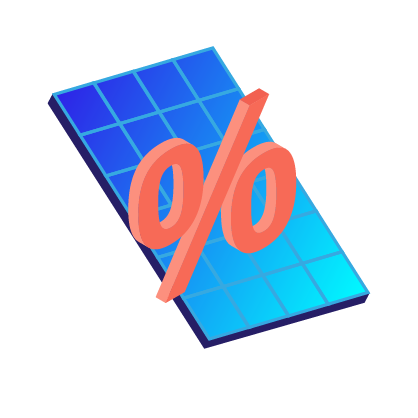PG&E Home Solar and Electric Vehicle Rates Rundown
As there is little opposition to the new plan, it’s highly likely that these will be the same rates the California Public Utilities Commission (CPUC) approves this summer.
There is some exciting development for solar and energy storage system owners, so read on to learn more about what these new rates could mean for you!
The EV-A Schedule
The EV-A electric vehicle rate plan was designed to allow residential customers to combine their home and vehicle electricity costs. Under PG&E’s updated rate structure, customers with either energy storage systems or electric vehicles (or both!) can now take advantage of the EV-A Schedule. This will likely be the best rate available to residential customers who own both solar and storage systems.
Participation among storage-only customers will be capped at 30,000 and they will also face a minimum required storage capacity. To take advantage of the EV-A Schedule, a customer without solar panels must have storage capacity that covers at least 0.05 percent of their annual consumption from the previous 12 months if their annual usage is over 6,000 kWh. For customers with an annual usage of 6,000 kWh or less, the installed storage capacity must be at least 2kWh.
The Time of Use (TOU) periods have changed slightly under the new rate:
| Off Peak | 12:00 am – 3:00 pm |
| Part Peak | 3:00 pm – 4:00 pm & 9:00 pm- 12:00 am |
| Peak | 4:00 pm – 9:00 pm |
While the exact rate amounts will change slightly, the structure will remain the same. The table below acts as a guideline of how the rates and TOU periods will look:
| Season | Time of Use Period | Rate (cents per kWH) |
| Winter | Off Peak | 14.99 |
| (October – May) | Part Peak | 31.71 |
| Peak | 42.76 | |
| Summer | Off Peak | 14.99 |
| (June – September) | Part Peak | 28.37 |
| Peak | 30.04 |
Grandfathered Solar Time of Use Schedules:
In January 2017, the CPUC approved the grandfathering of TOU schedules for solar customers.
Qualifying PG&E customers for grandfathered TOU periods include:
- Residential Net Energy Metering-1 customers who choose to transition to a TOU before the implementation of new TOU periods.
- Residential Net Energy Metering-2 customers who install solar panels prior to the implementation of the new TOU rates (estimated to roll out in November 2020).
Keep in mind that while the TOU schedules are grandfathered, the actual rates are subject to change. TOU refers to the differential pricing due to the period of the day during which energy is being consumed. The schedules are designed to more accurately reflect how a utility’s cost of producing electricity varies throughout the day. Even though PG&E will not grandfather its current rates, the grandfathered TOU schedules will reward solar system customers by allowing them to take advantage of a relatively flat rate structure during both solar generation and non-generation hours.
In comparison, customers who don’t fall under the grandfathered TOU schedules will likely see higher rates during non-generation hours.
If you’re a PG&E customer who has considered going solar, now’s the time! To be eligible for the grandfathered TOU schedules, PG&E customers must install solar panels before the new TOU rates go into effect, which will likely be in November 2020. Homeowners who go solar today can also take advantage of the Federal Income Tax Credit, as well as any local or state level incentives!
To learn more about Time of Use schedules, PG&E’s rates, and how to get the best bang for your buck, subscribe to our blog and visit our online solar platform. Our Energy Advisors will assist you through every step of the solar journey.











